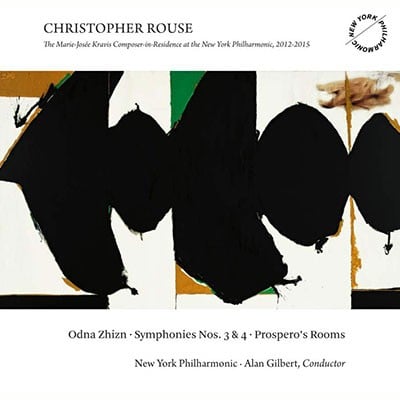2.picc.2.corA.2.bcl.2.dbn-4.3.4.1-timp-perc(3)-harp-cel-strings
Abbreviations (PDF)
Boosey & Hawkes
The question of what music can "communicate" has been much debated.
It is the most abstract of the arts — e.g., what does a C-sharp "mean"? — and yet it clearly seems to have the capacity to speak volumes to the listener about the myriad aspects of life. Of course, Stravinsky opined that music was incapable of saying anything at all, that the "meaning" was supplied by the listener rather than by the music itself.
Ultimately this is a debate for aestheticians, not composers. But I do fervently believe that there is a "lingua franca" of musical expression, one that most composers have understood over the years and have employed to convey specific emotional states. Of course, some composers have gone even further, attempting to tell actual stories or to describe events in sound. This so-called "program music" can be quite detailed (Strauss' "Ein Heldenleben") or more vague (Shostakovich's Fifth Symphony). Sometimes composers have had a great deal to say about their expressive intent in a given musical work; at other times they've had little if anything to say. Asked whether listeners would devise the programmatic meaning of his "Pathetique" Symphony, Tchaikovsky famously replied, "Let them guess."
For those of my scores in which I have had a reasonably specific expressive intent, I have usually tried to be open about the nature of that intent. However, there have been a few occasions when I have felt the need to say very little in this regard. The above paragraphs are preamble to the fact that, while I did have a particular meaning in mind when composing my Symphony No. 4, I prefer to keep it to myself. Some listeners may find the piece baffling but will nonetheless have to guess.
Composed for the New York Philharmonic and completed in Baltimore on June 30, 2013, this two-movement, twenty-minute symphony is scored for piccolo, two flutes, two oboes, English horn, two clarinets, contrabass clarinet, two bassoons, contrabassoon, four horns, three trumpets, four trombones, tuba, timpani, percussion (three players), harp, celesta, and strings.
Christopher Rouse
Reproduction Rights
These program notes can be reproduced free of charge with the following credit:
Reprinted by kind permission of Christopher Rouse

New York Philharmonic/Alan Gilbert
Dacapo 8.226110

